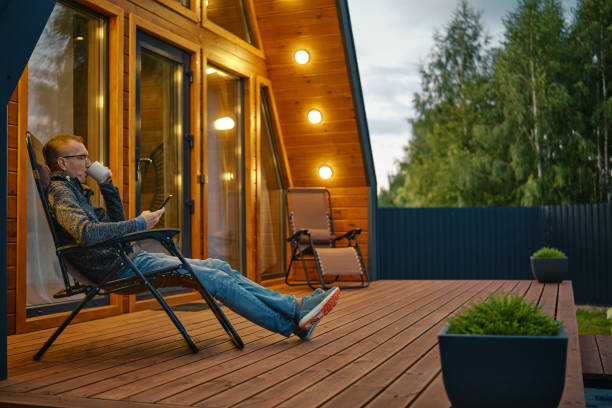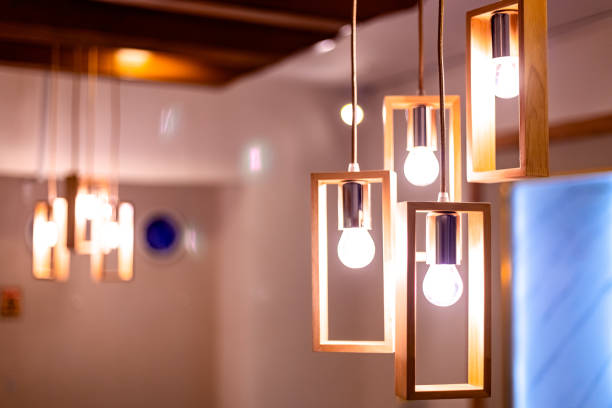Highlighting Architectural Features Through Lighting

Architectural lighting can transform a Halifax home’s exterior into a captivating, elegant showcase that enhances curb appeal and highlights unique design elements. For homeowners in Nova Scotia, choosing the right lighting involves more than selecting stylish fixtures; it requires understanding your home’s architecture, balancing aesthetics with functionality, and accounting for Halifax’s coastal climate. Whether you’re illuminating stone walls, accentuating a front entrance, or boosting overall curb appeal, this guide offers architectural lighting tips for home exteriors to create a stunning nighttime presence. Inspired by experts like Lightscapes Outdoor Lighting, this article provides design and technical advice tailored to Halifax homeowners, ensuring your home shines year-round.
Understanding Architectural Lighting for Home Exteriors
Architectural lighting focuses on illuminating a home’s structural elements—such as walls, columns, gables, or entryways—to enhance its aesthetic appeal and functionality. Unlike general outdoor lighting, which may prioritize safety or security, architectural lighting emphasizes design, drawing attention to the unique features that make your home stand out. For Halifax homeowners, this means creating a welcoming first impression while addressing practical challenges like weather resistance and energy efficiency.
The key goals of architectural lighting include:
Aesthetics: Highlighting textures, shapes, and details to elevate your home’s nighttime charm.
Safety: Illuminating entryways or pathways to ensure safe navigation.
Property Value: Enhancing curb appeal to make your home more attractive to potential buyers.
Year-Round Appeal: Designing lighting that adapts to Halifax’s seasonal changes, from foggy summers to snowy winters.
Halifax’s coastal climate, with its salt air, frequent rain, and occasional snow, demands durable fixtures that resist corrosion and moisture. By understanding your home’s architectural features and lighting objectives, you can create a cohesive plan that enhances both beauty and practicality.
Types of Architectural Lighting Techniques
Different lighting techniques can accentuate various architectural elements of your home. Here’s a breakdown of the most effective methods for Halifax exteriors, along with practical tips for implementation.
Façade Lighting
Façade lighting illuminates the front of your home, creating a cohesive, polished look that enhances curb appeal lighting. This technique highlights the entire exterior surface, showcasing materials like brick, siding, or stone.
Techniques:
Wall Washing: Use wide-beam floodlights to evenly light large surfaces, softening shadows and creating a uniform glow.
Grazing: Place narrow-beam lights close to the wall to emphasize texture, ideal for brick or stucco.
Shadow Casting: Position lights to cast decorative shadows, adding depth and drama.
Best Fixtures: LED wall sconces or low-voltage floodlights for energy efficiency and durability.
Design Tip: Use warm LEDs (2700K–3000K) for a welcoming effect, especially for Halifax’s often overcast evenings.
Uplights for Stone Walls
Uplights for stone walls create a striking effect by emphasizing the texture and depth of materials like stone or brick, common in Halifax homes.
Technique: Place narrow-beam uplights at the base of the wall to cast light upward, highlighting natural patterns and contours.
Placement Tips: Position fixtures 6–12 inches from the wall for optimal texture enhancement. Space lights 4–6 feet apart for even coverage.
Halifax Consideration: Choose IP65-rated or higher fixtures to withstand coastal moisture and salt exposure.
Front Entrance Feature Lights
Front entrance feature lights draw attention to doorways, arches, or porticos, creating a warm, inviting entry for guests.
Options: Pendant lights for a classic look, recessed lights for a modern aesthetic, or directional spotlights to highlight architectural details like columns.
Design Tip: Use warm-toned bulbs (2700K) to create a welcoming vibe. Ensure lights are bright enough (200–400 lumens) for safety without overwhelming the space.
Halifax Tip: Opt for weather-resistant fixtures to handle rain and snow, ensuring reliable performance year-round.
House Architectural Accents
House architectural accents, such as gables, dormers, or decorative trim, can be showcased to add character and sophistication.
Techniques:
Spotlighting: Use directional LEDs to focus light on specific features like a chimney or window frame.
Silhouetting: Place lights behind an element to create a dramatic outline against a wall.
Fixture Choice: Adjustable LED spotlights for flexibility in directing light precisely where needed.
Design Tip: Highlight one or two focal points to avoid cluttering the visual effect.
Curb Appeal Lighting
Curb appeal lighting combines multiple techniques to create an overall stunning exterior, making your home stand out in the neighborhood.
Approach: Pair façade lighting with pathway lights and accent uplights for a balanced, cohesive look.
Example: Combine wall-washing floodlights with stake lights along a walkway and uplights on a stone pillar for a multi-dimensional effect.
Halifax Consideration: Use timers or smart systems to adjust lighting for Halifax’s varying daylight hours, ensuring energy efficiency.
Choosing the Right Fixtures and Technology
Selecting the right fixtures and technology is crucial for effective architectural lighting, especially in Halifax’s challenging climate.
LED vs. Other Lighting Options
LEDs:
Pros: Energy-efficient (80% less power than halogen), long lifespan (25,000–50,000 hours), and excellent performance in cold, humid conditions.
Cons: Higher upfront cost, though savings accrue over time.
Halifax Fit: Ideal for coastal environments, as LEDs resist moisture and temperature fluctuations.
Halogen/Incandescent:
Pros: Warm light and lower initial cost.
Cons: Shorter lifespan (2,000–4,000 hours) and higher energy use, requiring more maintenance in salty air.
Recommendation: LEDs are the best choice for architectural lighting in Halifax due to their durability and efficiency.
Smart Lighting Systems
Smart lighting systems allow remote control, scheduling, and color adjustments via apps or timers, perfect for Halifax’s seasonal daylight changes.
Benefits: Adjust brightness for summer evenings or dim lights during snowy winters to save energy.
Example: Use smart LEDs to schedule lights to turn on at dusk, adapting to Halifax’s variable sunset times.
Tip: Choose systems compatible with platforms like Google Home or Alexa for ease of use.
Weather-Resistant Fixtures
Halifax’s coastal climate demands fixtures that withstand salt air, rain, and snow.
Materials: Opt for marine-grade stainless steel, brass, or powder-coated aluminum to prevent corrosion.
IP Ratings: Select fixtures with IP65 or higher ratings for water and dust resistance.
Maintenance: Clean fixtures monthly with a damp cloth to remove salt buildup, extending their lifespan.
Design Tips for Effective Architectural Lighting
Creating a stunning exterior requires thoughtful design to balance aesthetics and functionality. Here are key architectural lighting tips for home exteriors:
Balance Light Intensity: Use 100–300 lumens for subtle accents and 400–600 lumens for focal points to avoid glare.
Layer Lighting Types: Combine ambient (e.g., sconces), accent (e.g., uplights), and task (e.g., entrance lights) for depth and harmony.
Choose Warm Tones: LEDs in 2700K–3000K create an inviting glow, ideal for Halifax’s cozy aesthetic.
Incorporate Symmetry: Place lights evenly (e.g., sconces on either side of a door) to guide the eye and create balance.
Test at Night: Walk around your home after installation to adjust angles, brightness, or placement for optimal effect.
Regional Considerations for Halifax Homeowners
Halifax’s coastal environment and seasonal extremes require specific considerations:
Coastal Climate: Salt air and moisture accelerate corrosion, so choose fixtures with durable finishes like brass or stainless steel.
Seasonal Adjustments: Clear snow from fixtures in winter to maintain illumination. Adjust timers for longer summer evenings.
Light Pollution: Check Halifax Regional Municipality regulations to avoid excessive brightness or light spillage that could disturb neighbors.
Solar Options: Solar-powered lights are eco-friendly but may be less reliable in Halifax’s cloudy conditions; ensure adequate sunlight exposure.
Practical Steps to Implement Architectural Lighting
Ready to highlight your home’s architectural features? Follow these steps:
Assess Your Exterior: Identify key features like stone walls, gables, or entrances that deserve attention. Note areas needing safety lighting.
Create a Lighting Plan: Sketch your home’s façade, marking fixture placements. Plan for a mix of façade lighting, uplights, and entrance lights.
Set a Budget: Expect to spend $500–$2,500 for fixtures, wiring, and installation, depending on complexity. LEDs save costs long-term.
Choose Suppliers: Work with trusted providers like Lightscapes Outdoor Lighting for high-quality, Halifax-suited fixtures.
DIY vs. Professional:
DIY: Suitable for simple setups like solar uplights. Follow electrical safety codes.
Professional: Recommended for wired or smart systems. Experts ensure compliance and optimal design.
Test and Refine: After installation, evaluate lighting at night to adjust for glare, dark spots, or uneven illumination.
Conclusion
Highlighting your Halifax home’s architectural features through lighting is a powerful way to enhance curb appeal, safety, and nighttime charm. By using techniques like façade lighting, uplights for stone walls, and front entrance feature lights, you can create a stunning exterior that stands out in any season. Prioritize energy-efficient LEDs, weather-resistant fixtures, and smart systems to address Halifax’s coastal climate and varying daylight. Start by assessing your home’s features, setting a budget, and consulting experts like Lightscapes Outdoor Lighting for tailored solutions. Illuminate your home today and let its architecture shine.
FAQ’s
1. Why is architectural lighting important for my Halifax home’s exterior?
Architectural lighting enhances curb appeal, highlights house architectural accents like stone walls or entrances, and improves safety. In Halifax, durable fixtures create a stunning nighttime look while withstanding coastal weather, boosting your home’s charm and value.
2. What are the best architectural lighting tips for home exteriors in Halifax?
Layer façade lighting, uplights for stone walls, and front entrance feature lights; use warm LEDs (2700K–3000K); avoid over-lighting; and choose IP65-rated fixtures for Halifax’s salty, wet climate. Consult Lightscapes Outdoor Lighting for tailored designs.
3. How can façade lighting improve my home’s curb appeal?
Façade lighting, like wall washing or grazing, highlights your home’s exterior texture and structure, creating a cohesive, elegant look. Use energy-efficient LEDs to illuminate siding or brick, enhancing curb appeal lighting for a welcoming Halifax home.
4. Are LEDs the best choice for uplights for stone walls in Halifax?
Yes, LEDs are ideal for uplights for stone walls due to their energy efficiency, long lifespan (25,000–50,000 hours), and durability in Halifax’s humid, salty conditions. They highlight textures effectively and require less maintenance than halogen.
5. How do I design effective front entrance feature lights?
Use warm LED pendant or recessed lights (200–400 lumens) to highlight doorways or arches, ensuring a safe, inviting entry. Choose weather-resistant fixtures to withstand Halifax’s rain and snow, and test at night for optimal curb appeal lighting.


